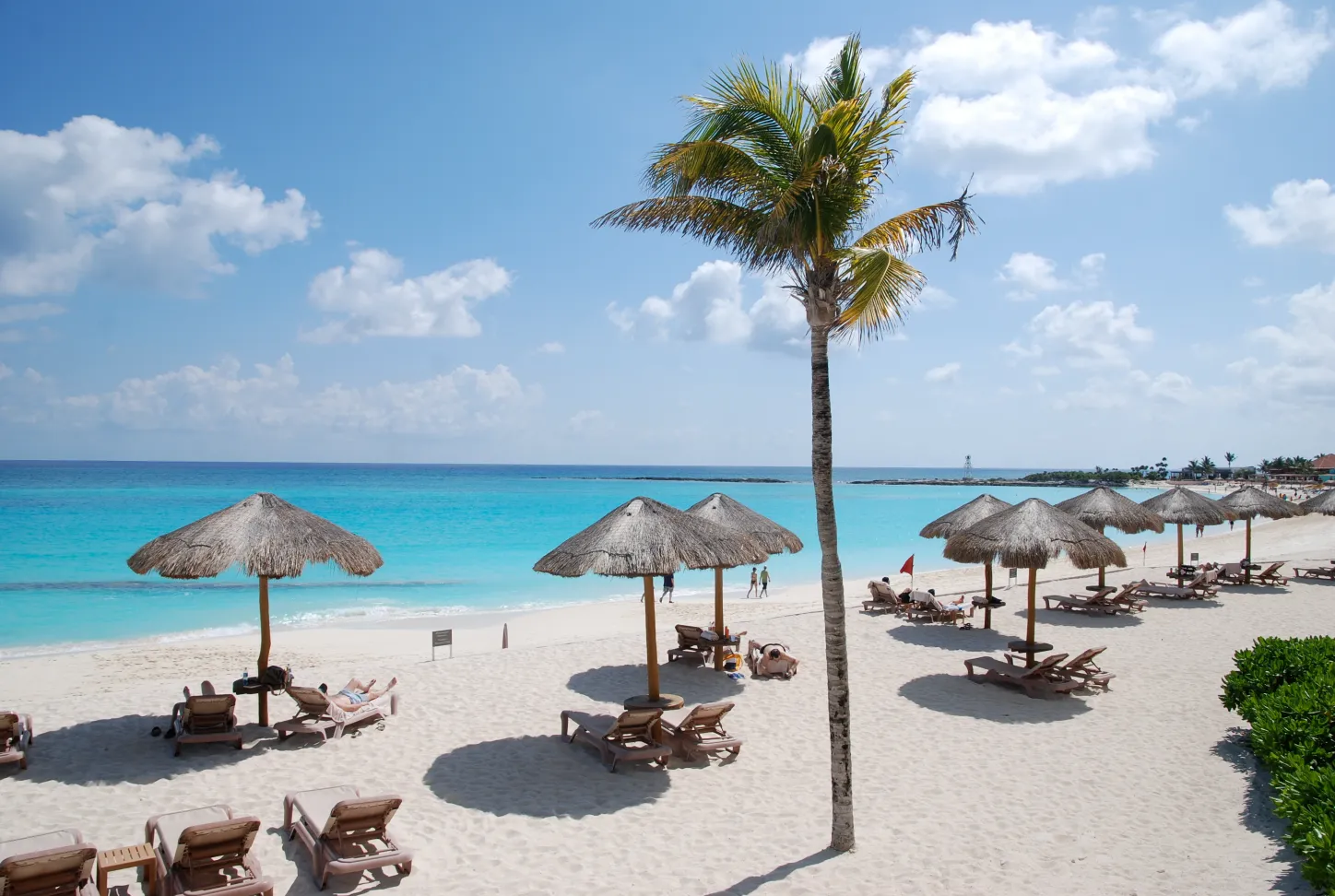Last week’s essay (Oaxaca State) focused on authenticity as a guiding attribute for your overseas living deliberations. With this week’s emphasis on the State of Quintana Roo (its islands, superstar urban resorts, and micro-communities appealing to folks from around the world) another key attribute for successful living in Mexico is lifestyle intention.

Quintana Roo is Mexico’s tourism powerhouse and the most successful vacation development story in the Americas (if not the world). Today, half of Mexico’s 40 million “overnight” visitors land in Quintana Roo. And for good reason, but does that necessarily mean you’ll be happy living here?
As recently as the 1970’s (the State was only formed in 1974; it wasn’t even a Mexican “territory” until 1902) QR was scantily populated and more a string of coco palm plantations and isolated fishing villages. Today, the entire 500-kilometer-long Caribbean coast has long been taken over, sliced up, and plotted for some form of actual (or future) tourism or residential development. The only exception is (gracias a Dios) the mid-state Sian Ka’an Biosphere Reserve. The southern cruise port town of Mahahual, the Tren Maya, and the new international airport in Tulum ensure that the push south will march on until Mexico runs out of land at the Belize border.
Now home to two million residents (24th of Mexico’s 32 States) and a tourism economy so famous it has eclipsed vacationer interest in going anywhere else in the Caribbean, QR just might be your new beach living paradise. We’ve rated (see chart below) seven places where the foreign-born invasion is palpable.
Choose your living location mindful of how the global tourism economy (more than the Mexican government) has been calling the shots here for the past four decades. This has undeniably spurred environmental impacts, but also investment, higher living standards, and generational socio-economic opportunities for hundreds of thousands of your new Mexican neighbors. Bravo for that.
But you can sometimes feel a detached “along for the ride” living experience. This is certainly true in Cancun and Playa del Carmen, where foreign-owned resort after resort has a free hand in plowing ahead (literally) in response to unquenched demand for bigger and bigger all-inclusive, walled enclaves for the world’s vacationers. You’ll have to turn inland in the state’s southern region (or an island) to find anything resembling Mexican-Mayan cultural authenticity — if that’s what floats your boat.
You’ll need to get comfortable with the idea of living where others come to party and do vacation things. The cost of living (housing, food, energy, entertainment) is higher here. Across a tortilla-flat landscape of Caribbean, Mayan, and modern Mexican influences, QR has more beach community living choices than in any other Mexican State. This is Hurricane Alley, with 51 inches of annual rain and a daily mean temperature that approaches 80 degrees. April and August are the two hottest months and air-conditioned living prevails statewide. Cooling Caribbean breeze helps.
Cancun and Playa del Carmen earn higher scores (see chart), assuming living in an urban resort is your thing. Cancun (population approaching one million) has two physical spaces: the mainland city and the number “7-shaped” island resort (home to over 32,000 hotel rooms and surprisingly few residential living options). You’ll more likely be making your home on the mainland, in gated residential communities, a high-rise condo tower, or a private home in Cancun’s sprawl. Air connectivity to get you back home or away (Europe or South America, anyone?) is unsurpassed.
What’s not always easy is connecting with fellow foreigners (reflected in Cancun’s low “Community” and “Culture” scores). Cancun’s civil society has been more focused on tourism careers than building cultural institutions (museums, parks, performing arts venues for example) or communal bonds than you would expect to find in cities of comparable size and prosperity.
Puerto Morelos may be a better shot at a more intention-focused full-time living experience for some. It’s got a fishing town vibe and under 30,000 residents. Hemmed in by mangroves that confine inland sprawl, you can live along the narrow beach-facing corridor (a truly scenic, small-town experience) or across the main highway in the “city” – a place with no rhyme or reason. Puerto affords local mobility with a Tren May station (Cancun City is 42 kms north), a semblance of less urban living, and (mostly) avoids the daily hoards that can overwhelm other Riviera Maya locations.
Playa del Carmen (population exceeding 300,000, if anyone is counting) has a different vibe and more pockets of neighborly connections between folks from around the world and their Mexican neighbors. Since almost no one can make every day a “beach day,” you’ll find ways to learn Spanish (or Mayan), volunteer, recreate, and move about the Mexican Caribbean with so much above (and below) ground natural wonderment, found in nearby Isla Cozumel, mainland forests, jungle savanna, mangroves, cenotes, reefs, and eco-parks. The small business scene has flourishing expat-run enterprises, Mexicans from across the country, superb dining options, bars, mega-shopping options, and (of course) hordes of day visitors who have made Playa’s La Quinta Avenida and nearby ferry pier a 24/7 beehive of commercialism.
Ah, Isla Cozumel, so close to being a true confluence of the best of Mexico, the Mundo Maya, and the Caribbean. It sits just 30 minutes offshore by ferry and is home to a mere 88,000 souls. But alas, it’s the world’s most visited cruise port of call, and staying clear of the invasion is harder and harder. Mega-vessel dockings are daily and can average over 50,000 weekly visitors. Still, finding quiet spaces in the morning and early evenings might be enough compensation. The island’s west-facing beaches (clear of the seaweed that takes over QR during part of the year) are truly idyllic; it’s where those Corona beer commercials used to be filmed. Cozumel is a very friendly place that keeps its rhythm alongside Mayan, familial cultural connections with the mainland.
Two other islands draw the attention of the “gotta-have-a-beach” transplants. Of course, there’s Isla Mujeres, forever lingering on the horizon north of the Cancun resort zone. Isla’s fall to the all-inclusive resort trend was, I guess, inevitable. But it’s still a very cool
place for “life-in-a-golfcart” mobility and there are still Mayan fishermen here. Drinking water shortages and ferry-only access keep the place a reasonable option for the hearty Caribbean Island fanatic.
Far more isolated is Isla Holbox, secluded along QR’s wild north coast. A smaller enclave of the more barefoot-bohemian cohort just loves it here. It’s a throwback to QR from a couple of generations ago. Quiet, ungentrified, and friendly — albeit with not a whole lot of year-round living housing choices.
And finally, sitting adjacent to the remarkable Sian Ka’an Biosphere Reserve is Tulum, the two-headed (beachfront and inland city) place that may someday take over as QR’s most troubling example of unfettered growth. Its Mayan archaeological site, silky Caribbean waters, and wellness-themed small hotels contend with becoming QR’s next pole for uncontrolled development and environmental impacts. The new international airport will bring yet untold change. Anyone who’s lived here for more than a few years laments what’s gone wrong. But how can you deny the appeal of a place consistently named the best beach in The Americas?
Also consider, your family and friends will find just about any reason to come down for a stay. You’ll need that spare bedroom. Where I live now in central Mexico, my kids have had enough. They all want to party in the Mexican Caribbean. Bringing compatible lifestyle intentions, many of those migrating here can’t imagine living elsewhere.
##
Greg first visited Cancun in 1979. He has worked on behalf of Quintana Roo tourism marketing agencies for decades, allowing him to see what it has become: the good (great!) and the head-scratching “What happened?!”



